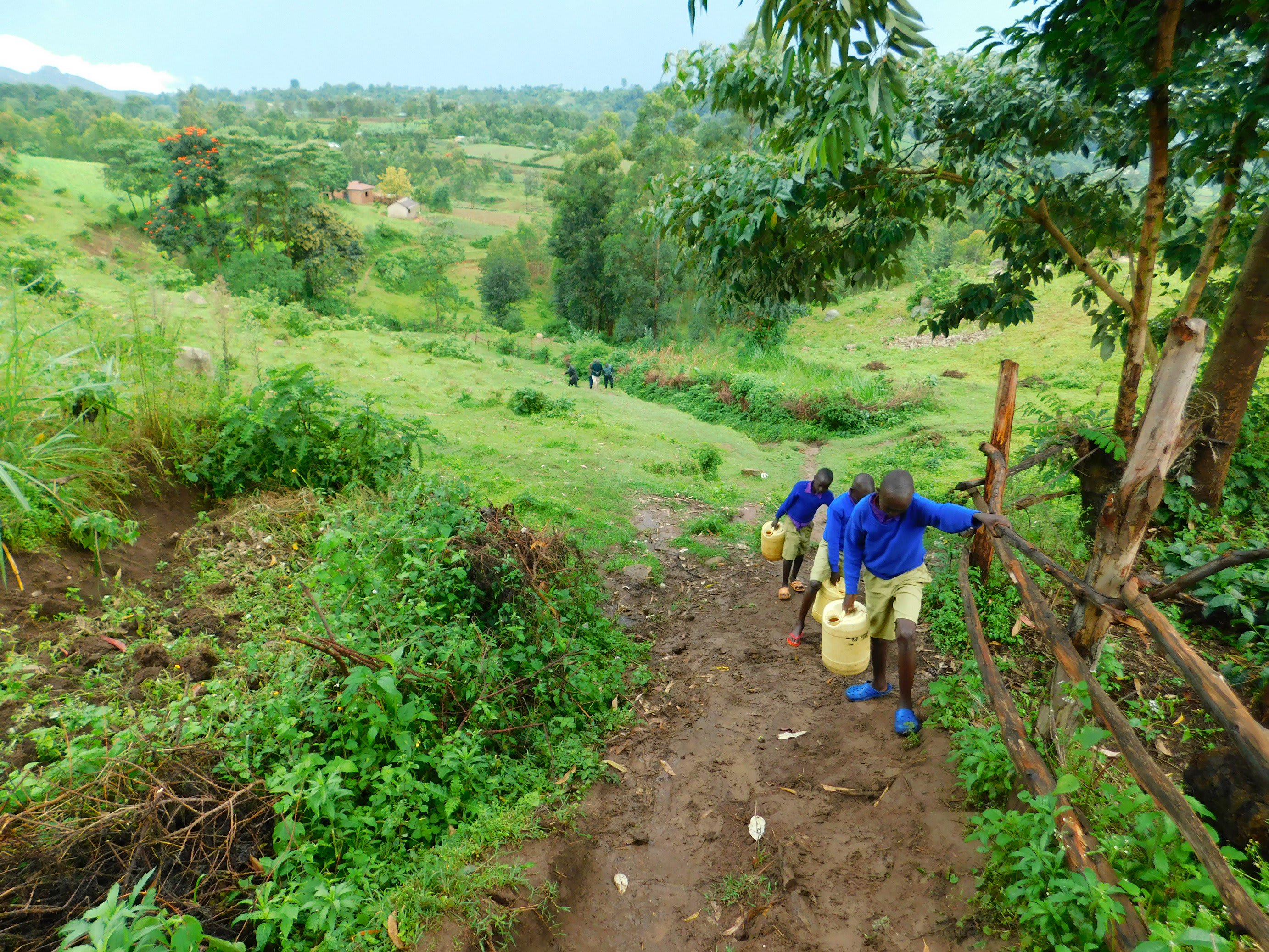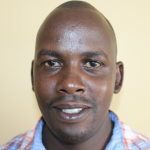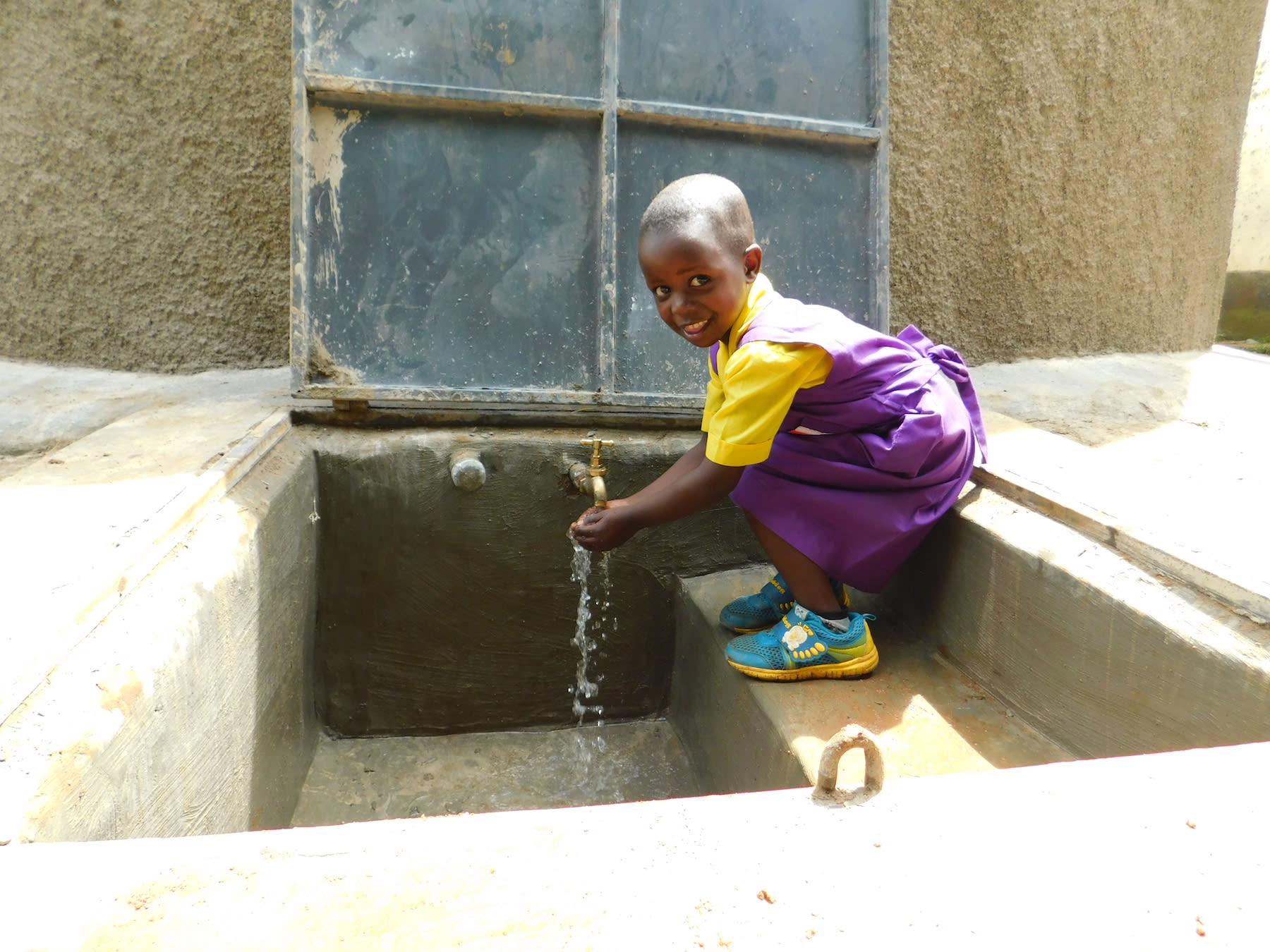Kapkures Primary School was established in 1953 by the African Inland Church (AIC) to reduce the distance local students had to travel to receive an education. It is one of the oldest schools in Nandi County and sits on 3.6 hectares of land. Currently, 376 students between pre-primary and eighth grade attend the school, taught and supported by 13 teachers and staff. The school has about 10 classrooms and a large playing field.
We learned about Kapkures Primary School thanks to the Head Teacher of nearby Kapkemich Primary School, who knew the Head Teacher at Kapkures from their time working together in Vihiga County, before being transferred to Nandi County. Together, they approached our staff to see if Kapkures would be eligible for a similar project to Kapkemich, and we have been working with Kapkures Primary School ever since.
The school is in a rural part of Nandi County where the community is predominantly agrarian. Tea, coffee, and trees like eucalyptus do well here, making the environment very green. The buildings in the area range from temporary to semi-permanent and permanent ones.
A normal day for students at Kapkures Primary starts early in the morning. At 7:00 am students are expected to be at school for morning preps, when they study and revise work. Lessons start at 8:00 am, with 6 lessons and 2 breaks all before lunch at 12:40 pm. Breaking for lunch until 2:00 pm, students return to class at 3:10 pm when they transition to games and sports for an hour. by 4:10 pm, students are back on their way home.
This schedule is often started, and more frequently interrupted, by the students' need to fetch water at a nearby partially protected spring. The spring is down many steep paths that become extremely slippery in the mud when it rains. According to the school's Head Teacher Mr. Japheth K. Maiyo, 2 pupils were recently injured after falling down the path when they had gone to fetch water from the spring. The school had to cover the medical costs for those pupils.

The spring is inadequate to sustain the school's water needs throughout the year due to its distance from the school, its shared use with the community, and its seasonality. For example, during this last year's dry season, the spring dried up completely. Because the spring is shared with the community, students must sometimes wait in line to collect water, which increases the school time lost to fetching water.
There is no water storage drum or water treatment available at the school. The containers students carry to the spring are therefore the maximum capacity of water storage at any given time, when they are full. The only other source of water for Kapkures Primary School is rainwater collection, done by putting out buckets to collect runoff from the roof.
"Our pupils are always forced to go outside the school to fetch water from nearby available sources which may not be so safe for human consumption, exposing the entire school to contracting waterborne diseases," said Head Teacher Mr. Japheth K. Maiyo.
The current sanitation situation in the school is very poor. Initially, girls had 8 doors of VIP latrines to themselves, but this building collapsed and left them with none. The school management then had to surrender 3 doors of latrines meant for teachers to the girls, but they are still struggling.
"The hygiene in the school is so wanting...The 3-door pit latrines meant for teachers were surrendered to [the] girls but they are not enough. We do appeal you to consider us so as to improve on sanitation and hygiene in our school, " said school Chairperson Mr. David Mbacha.
These and the boys' latrines are rarely cleaned due to the water scarcity in the school, and sometimes too-long lines at the latrines mean that students are still forced to seek out other places to go to the bathroom. Hygiene in the kitchen is wanting as well; dirty utensils go uncleaned and are reused when there is not enough water to wash them.
What we can do:
Rain Tank
A 50,000-liter rain tank will help alleviate the water crisis at this school. The school will help collect the needed construction materials such as sand, bricks, rocks, and water for mixing cement. We will complement their materials by providing an expert artisan, tools, hardware, and the guttering system. Once finished, this tank will begin catching rainfall that will be used by the school’s students and staff for drinking, handwashing, cooking, cleaning, and much more.
We and the school strongly believe that all of these components will work together to improve standards at this school, which will help lead to better student academic performance and will help unlock the opportunity for these students to live better, healthier lives.
Handwashing Stations
There is currently nowhere for students to wash their hands after using the latrines or before eating lunch, let alone the water to do so.
The student health club will oversee the 2 new handwashing stations we will provide, and make sure they are kept clean and in working condition. The club leaders will fill the handwashing stations with water daily and make sure they are always supplied with a cleaning agent such as soap or ash.
VIP Latrines
2 triple-door latrines will be constructed with local materials that the school will help gather. 3 doors will serve the girls while the other 3 will serve the boys. All of these new latrines will have cement floors that are designed to be easy to use and to clean. And with a rain tank right on school property, there should be enough water to keep them clean.
Training
We will hold training on improved hygiene, health, and sanitation habits for 2 days at this school. Our team of facilitators will use a variety of methods to train students and staff, including participatory hygiene and sanitation transformation (PHAST) and asset-based community development (ABCD). We will initiate a child-to-child (CTC) health club, which will prepare students to lead other students into healthy habits at school and at home. We will also lead lectures, group discussions, and provide illustrative handouts to teach health topics and ways to promote good hygiene practices within the school.

 Rainwater Catchment
Rainwater Catchment
 Rehabilitation Project
Rehabilitation Project





































